How to quickly set up a home office: Top tips for getting your workspace sorted
Back working remotely again? Here’s how to prepare your pad once and for all
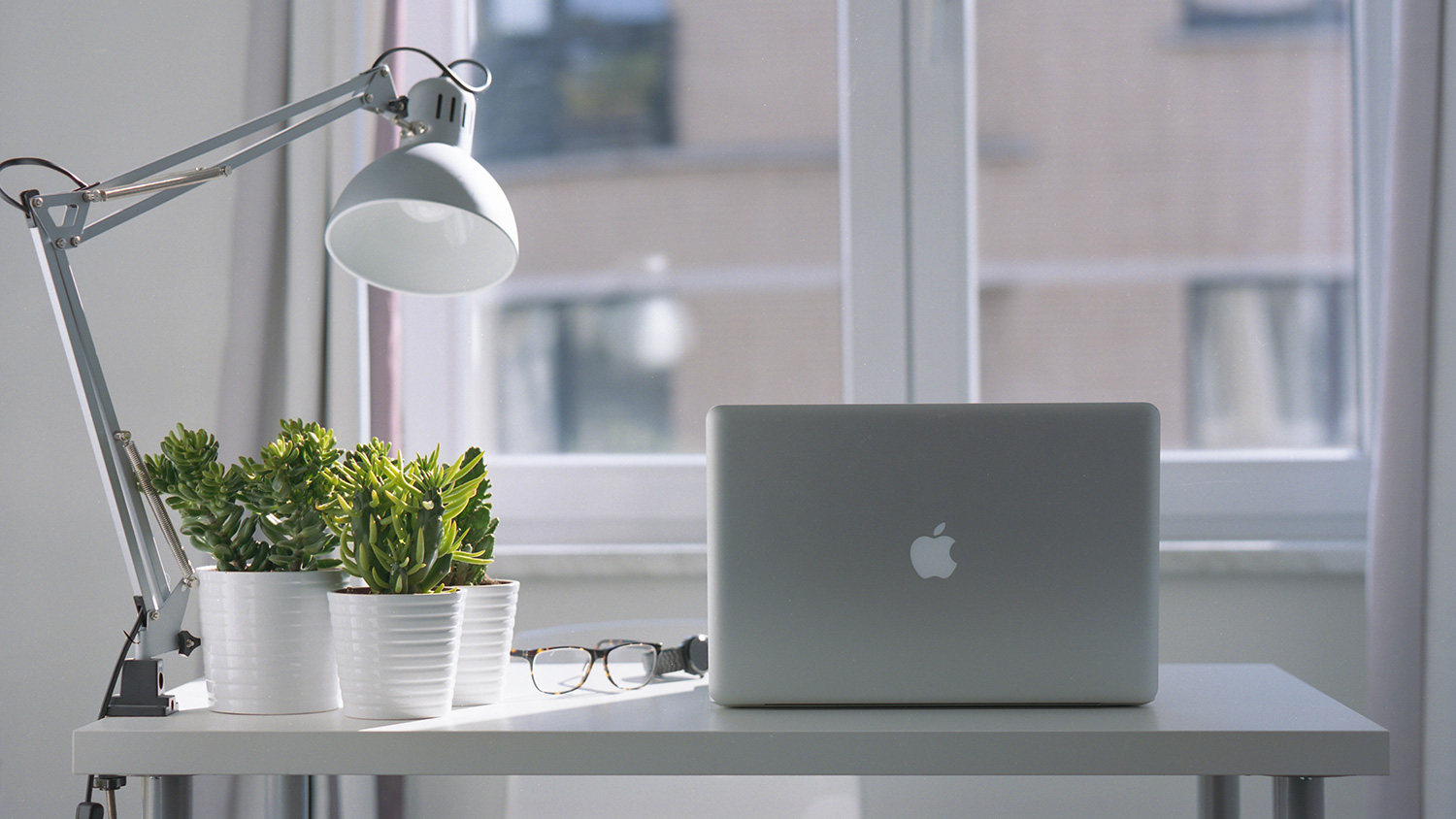

So we're back where we were in March: working for home again. If you avoided sorting out your home office setup for the first lockdown, now's the time to bite the bullet and organise something more long-term. If this is going to work – and by that we mean you being as productive as possible – you’re going to need to make a few changes at home.
Potentially millions of people are again staying away from the office and working from home, here’s how you should set up a home office quickly, efficiently and affordably.
- Really pushed for space? These are the best lap desks
- Or browse the best standing desks
- Get flexible with one of the best laptops in 2020
1. Find a separate space
No, not the kitchen table. Nor the sofa in the living room. Seriously, don’t bother – there are way too many distractions in the centre of your home. You may think that working from home is a great opportunity to get the washing done/prepare the dinner/look after the kids while you are getting paid, but it is not like that. The best way to avoid the clutter and the chaos of daily life is to find a place where your work life can be completely separate from your home life.
In short, somewhere with a door that can be closed. It obviously makes sense to base yourself in a spare room if you have one, but anywhere upstairs in a house, or in the corner of a bedroom, will help you keep that separation.
2. Create a desktop
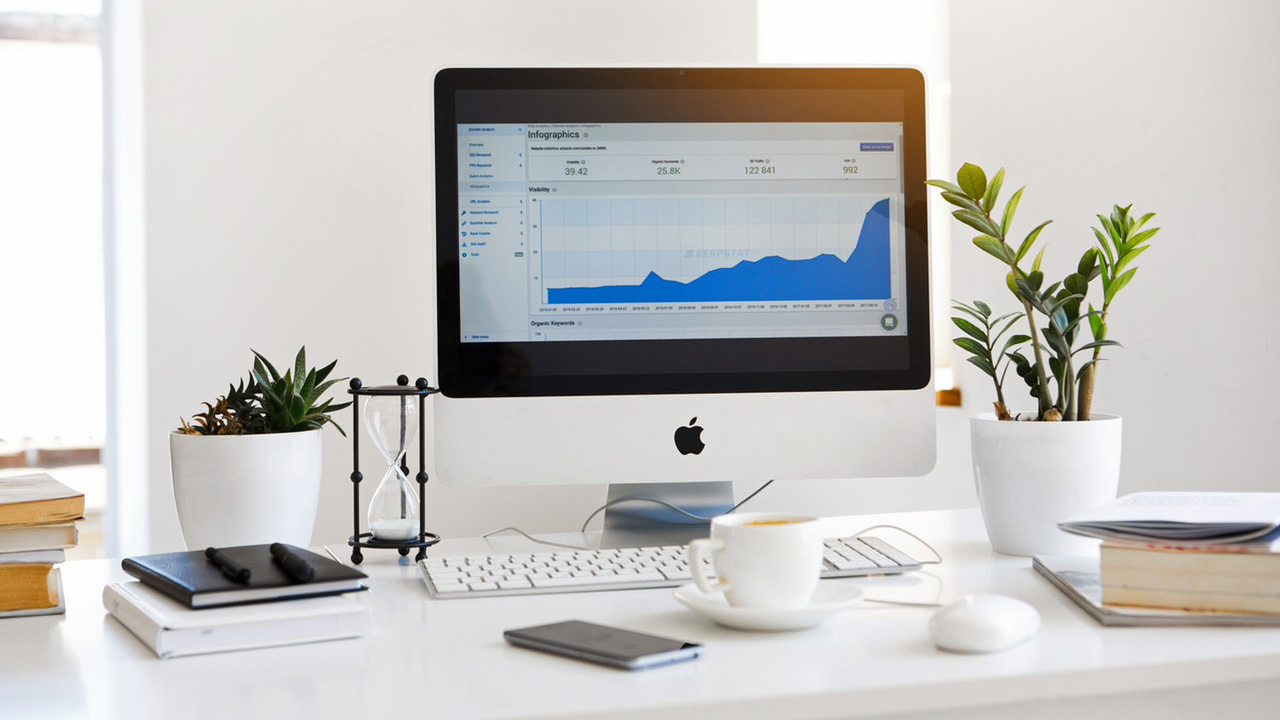
No one's ever worked productively from their sofa
Resist the temptation to put the ‘lap’ into laptop and work from a sofa; it might be fine for booking a holiday, but you’ll get nothing done work-wise, and you’ll ruin your neck and back in the process. If you have any kind of desk in the house, grab it and move it into your designated office space. If you haven’t got a desk, move a kitchen table or other surface into another room.
However, it’s worth remembering that desktops in corporate offices are ergonomically designed to reduce the risk of physical stress and injury to your upper body and legs, so make sure you have plenty of legroom and that the desk is at the correct height; the industry standard for desks is 29 inches/73.5cm tall.
- Kit yourself out with one of the best desks for home
3. Get a multi-tasking monitor
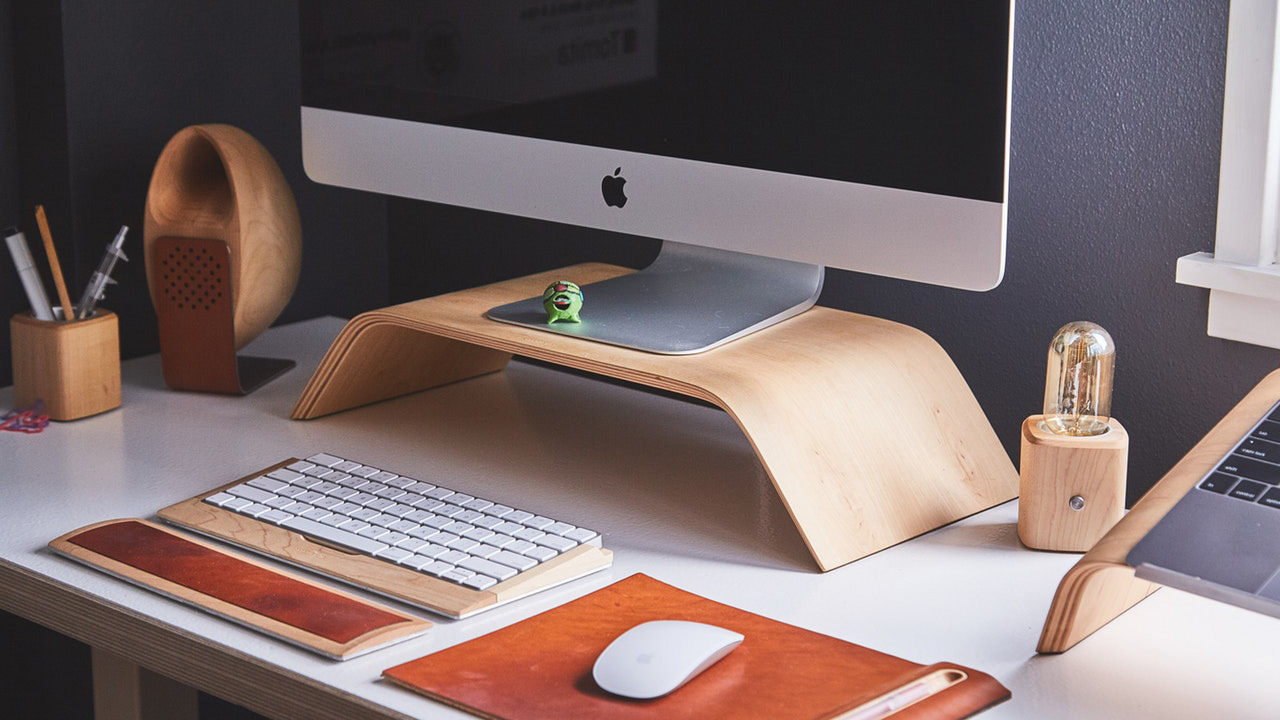
To avoid neck problems, the top of your monitor should be at eye level
If you’ve been sent home to work at short notice, you’ve probably got a laptop from work, or you’re using your own. You can use them as they are, preferably on a desk, though remember that ideally the top of the screen should be at your eye level so that you’re looking slightly down at the centre of the screen. You can get away with an ultra-high laptop riser and a Bluetooth keyboard for short-term home-working, but what you should ideally be using is a dedicated monitor to plug your laptop into.
Get all the latest news, reviews, deals and buying guides on gorgeous tech, home and active products from the T3 experts
Of course, what you secretly really want on your desktop is ones of the best 4K monitors. These range from massive, curved ‘ultrawide’ options such as LG’s 49-inch 49WL95C monitor to the smaller and more affordable version Samsung 27-inch C27F390. The sweet spot for practical use is actually a 34-incher like the Samsung LC34J791WTUXEN. Deals can be had, and just like buying a TV, it’s virtually impossible to get one that’s too big …
4. Get a good keyboard
If you’ve been asked to work from home at really short notice and you don’t have a laptop of your own – and can’t borrow one from work – it’s possible you may have to use a tablet, or even a phone, as your computer. This is only really possible if you have a decent keyboard that you can attach to a smart device.
You could go for an affordable multi-device keyboard like the Logitech K480 or Microsoft Universal Foldable Bluetooth keyboard, but since all home offices – whether built around a desktop PC, Mac or a laptop – should ideally already include a good Bluetooth keyboard, it’s best to go something a bit more permanent, such as the Microsoft Modern Keyboard with Fingerprint ID or the Apple Magic Keyboard. Check out our guide to the best keyboards for a full ranking.
- See the best Bluetooth keyboards
- Add one of the top vertical mouses
6. Find a second space
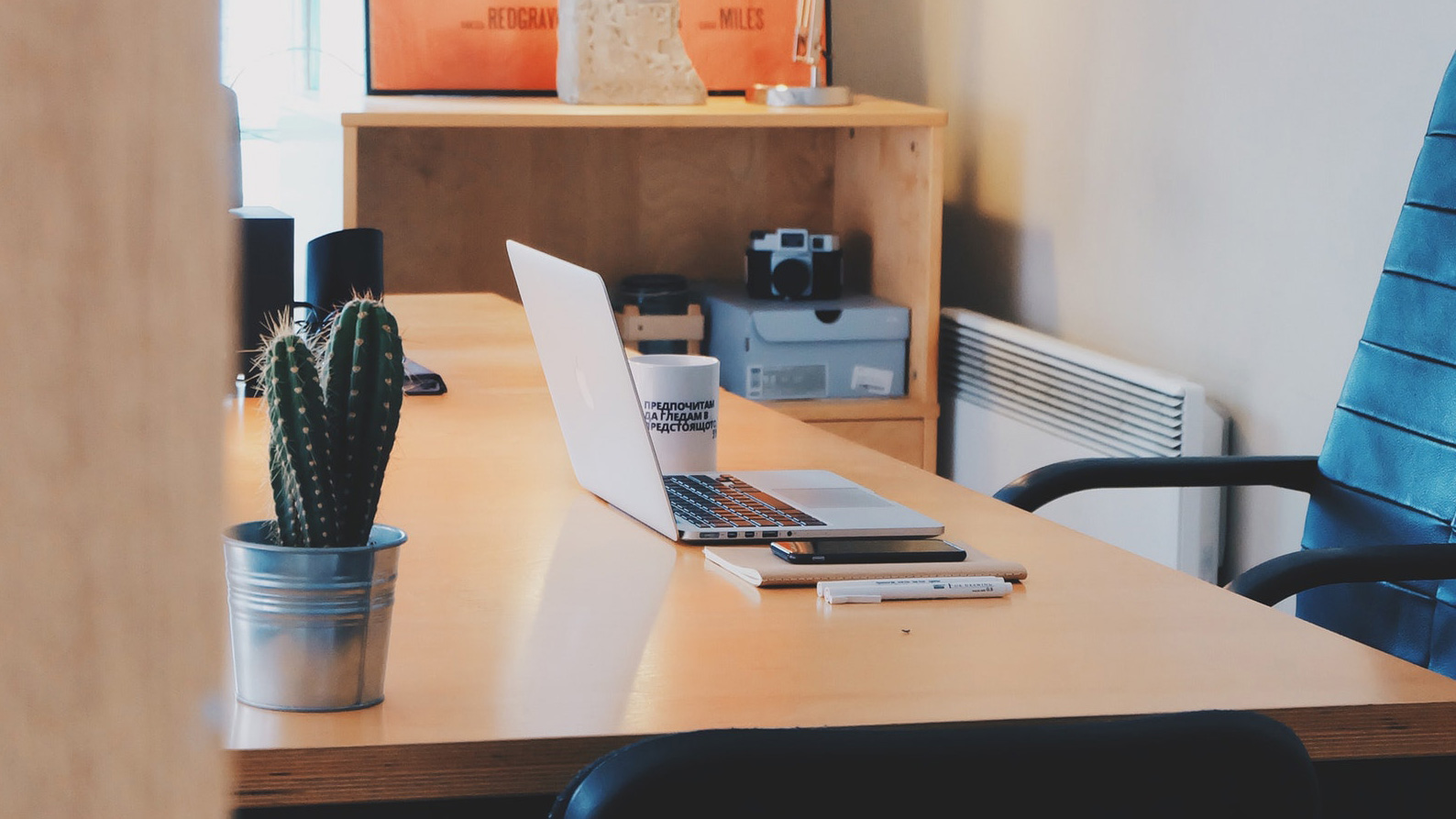
Working from home can get very sedentary, very quickly
Without the commute, and lunch hour, not to mention trips around the office to see other colleagues, working from home can be extremely sedentary. The easiest ways to avoid sitting in one position for long periods is to move around every hour, go for a short walk around the block at least once a day, and – if you can – have two desks, one for sitting and one for standing.
A standing desk can even boost work performance. While ideally you want to grab one of the best standing desks for maximum flexibility and stability, at a push you can also create your own (this does rely on you having a laptop). Find a cabinet, cupboard, or a chest of drawers that you can perch a laptop on at a decent height that feels natural. You can even use a few large, sturdy books to get to exactly the right height, as long as everything is secure.
7. Get a good chair
If there’s one thing you should try to borrow from work, it’s a supportive and comfortable chair that promotes good posture. Office chairs are decisive when it comes to comfort and safety while working, but they are not cheap; you don’t really want to be buying one with your own money unless you have to. However, if you need to invest in one for the long term, don’t delay.
Make sure that whatever you buy feels comfortable to lean back in; as a freelancer you’re about to discover the joys of keyboard-less voice dictation (built-in to both Mac OS and Windows 10), which you could never use in an office. As well as automatic voice-to-text, it also means no need to slouch across a desk.
8. Play random sounds
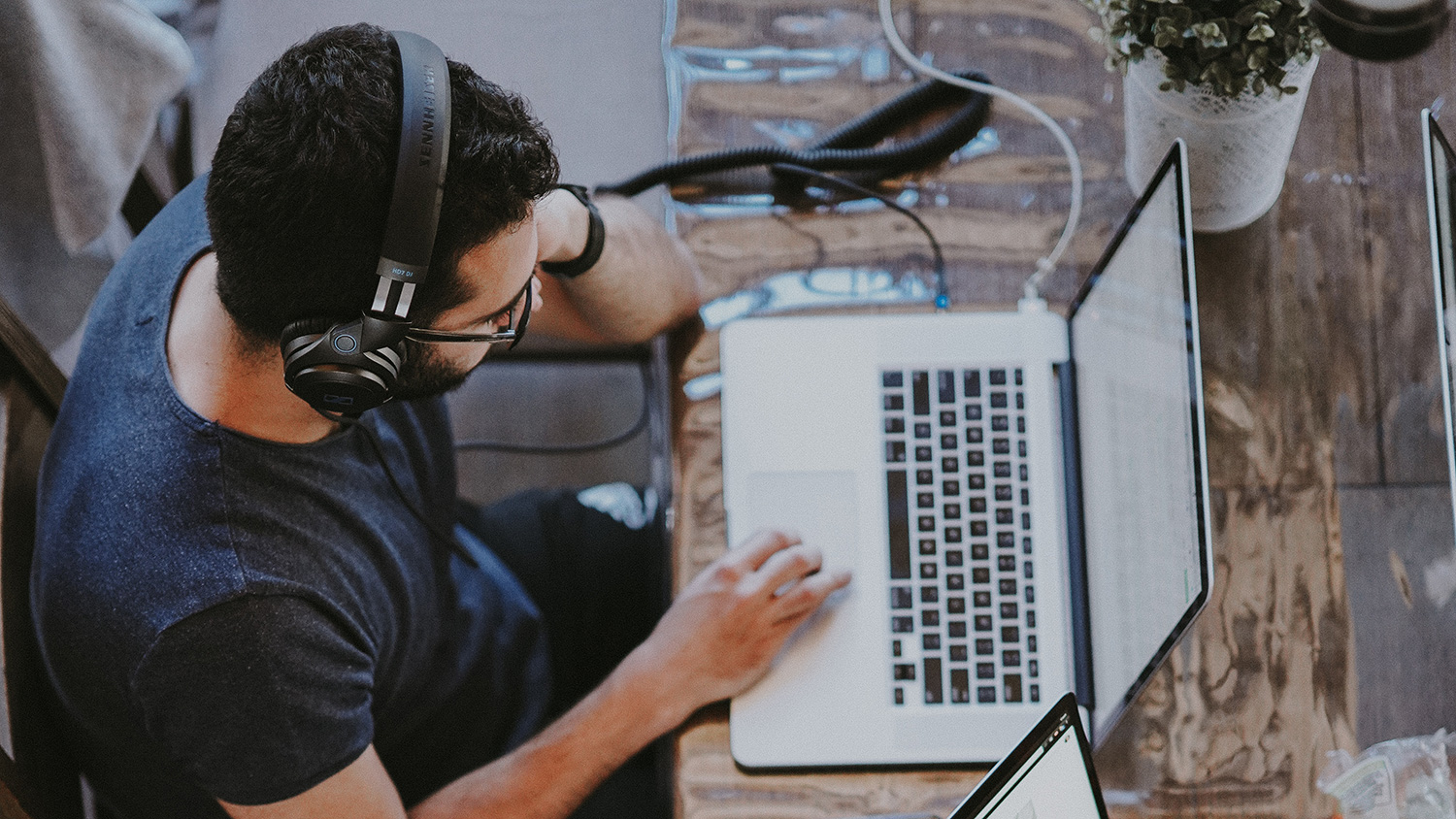
Music can distract, but random sounds and white noise should help you focus
If you think you’ll have some trouble concentrating, find ways of preventing yourself from getting distracted. Although playing your favourite music is often the worst idea (your brain latches onto patterns and prevents you from concentrating), listening to sound can work wonders if you put on some random music like Brian Eno’s Music For Airports or some ‘deep focus’ music.
You could buy yourself some expensive desktop speakers, but a regular pair of headphones are better. There’s probably no need for noise-cancelling headphones unless you’re in a very chaotic house (or your partner also gets sent home to work), but wireless headphones do help … particularly models like the over-ear AfterShock Aeropex bone conduction earphones, which have an ‘open ear’ design, so give you a lot of spatial awareness. For wearing around your home office all day, they’re perfect, and with 8 hours playing time, you know exactly when to clock out.
You might also want to check out our pick of the best wireless headphones, the best over-ear headphones, or if you're going all out (and are alone during the day) the best multi-room speakers.
Jamie Carter has been working home for over a decade.
Jamie is a freelance journalist, copywriter and author with 20 years' experience. He's written journalism for over 50 publications and websites and, when he's not writing, spending most of his time travelling – putting the latest travel tech through its paces.
